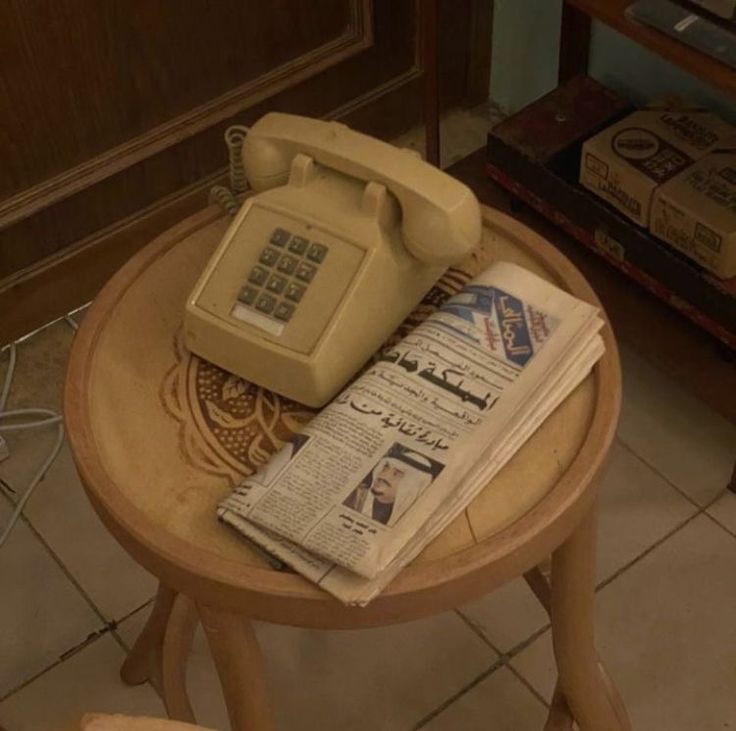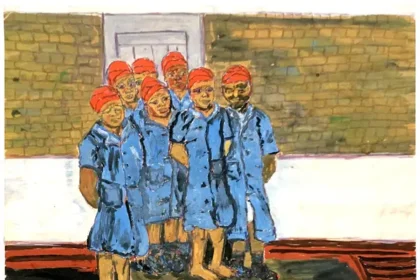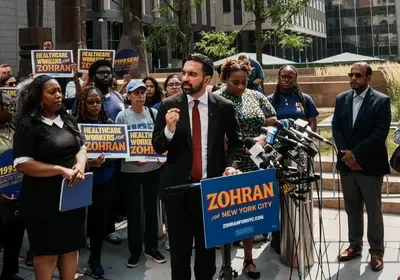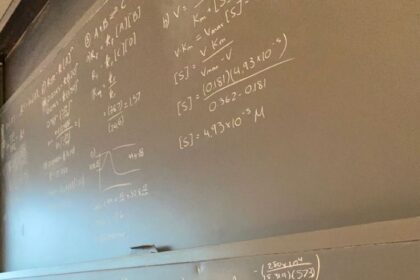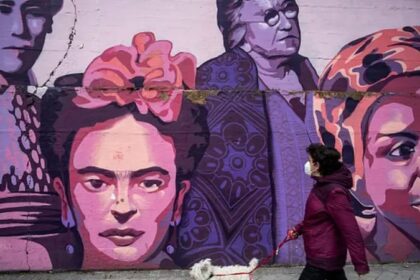Is the Third Temple of Jerusalem Being Built: The Temple is referred to as a single institution, but it is important to note that the Jerusalem Temple was destroyed and rebuilt. Before the present rebuilding, the present activity to build the Third Temple of Jerusalem on the Mount of Moriah, traces the last destroyed, available foundations of the Temple.
Third Temple of Jerusalem Being Built
If we say that the Temple is the house of prayer from the Holy God, then by all means, the First Temple was a minimalism tabernacle on the shoulders of prescribed and appointed Hebrews, designed by the Holy God. The Holy God was present there always, day and night, sitting on the Mercy Seat of the Ark of the Covenant. The Ark was made as a chest of acacia wood overlaid with gold, containing the Ten Commandments and serving as a symbolic representation of God’s presence, leading and fighting for the Hebrews.
From Tabernacle to Temple: Journey to the Promised Land
This tabernacle was made of wood planks and accessories, and as per God’s orders, on the first day of the first month of the second year of the Exodus from Egypt, this Tabernacle was erected and moved on the passage led by the Holy God to the Promised Land. From the 25th chapter of Exodus, Deuteronomy, Joshua, Judges, Samuel, Kings, Chronicles, Psalms, and Jeremiah (in New Testament books of Hebrews and Revelation), the Ark of the Covenant was more than just a chest. It was a powerful symbol of God’s presence, His covenant with the Israelites, and His ongoing relationship with His people. Its presence inspired awe, fear, and reverence, and it played a central role in Israelite worship and military endeavour. Third Temple of Jerusalem Being Built.
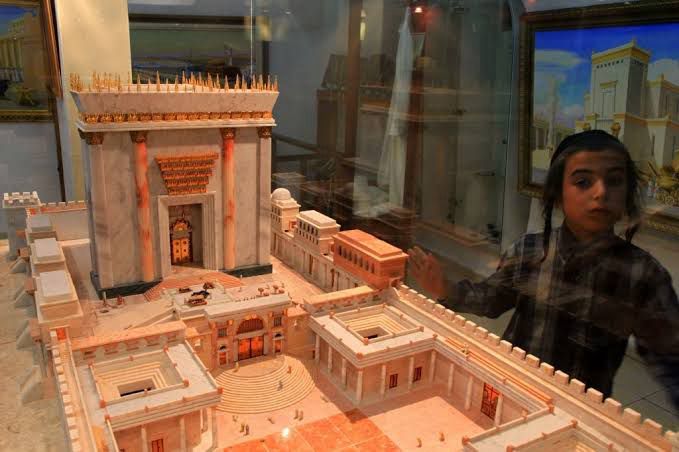
King David’s Desire and Solomon’s Construction of the First Temple
And then King David (prophet) thought that he lived in a beautiful mansion made of marble and cedar, and the Holy God’s Ark lived in a tabernacle. He decided to build a house for the Holy God, and he explained to the prophet Nathan his desire. But God said to Nathan: tell David, I made you king from shepherd, but you are a warrior; your hands are filled with blood. But your seed, your son, will make a dwelling place for Me. So King David collected all material, from wood to gold, and his son King Solomon built a house, a dwelling place for the Lord God. And it was the First Temple of Jerusalem. It was built during the reign of King Solomon, likely in the 10th century BC, and it was completed in 957 BC. This Temple was destroyed in 586 BC by Nebuchadnezzar II during the Babylonian siege of Jerusalem.
The construction of the Second Temple can be referred to in the books of the Holy Bible: Ezekiel, Ezra 1:1–4, and Chronicles 36:22–23. Fifty years after the Babylonians destroyed the First Temple in 587 BC, they were vanquished by the Persians. King Cyrus II of Persia gave permission for the Temple to be rebuilt. Under the governor Belshazzar, attempts were made to start the project. Only in 522 BC, when Zerubbabel became governor, was work on the Temple continued, in 521 BC under Persian King Darius II. The two Jewish prophets from Judea, Ezra and Nehemiah, were a major force in the reconstruction. The Temple was completed in 516 BC.
Desecration, Revolt, and Herod’s Renovation of the Second Temple
In 163 BC, the Greek ruler Antiochus erected a statue of Jupiter on the altar because the Temple was collectively used by Jews, Greeks, Romans, and Persians. For three years, the Temple was desecrated until the Jews revolted with Maccabee fighters and the Temple was taken back. In 20 BC, Herod the Great took it upon himself to extend and refurbish the Temple complex, although maintaining the character of Zerubbabel’s Temple. This is the final version of the Temple which tracks Israel’s building of a new project.
The Second Temple in Jerusalem was completed around 516 BC. This Temple was blessed by our Lord Jesus’ presence from 1 to 33 AD. Following the destruction of the First Temple by the Babylonians, Jewish exiles returned to Jerusalem and began rebuilding the Temple, which was finished in the sixth century BC. According to Jewish historians, the Temple was later enhanced by Herod the Great around 18 BC. I am here to tell you why Third Temple of Jerusalem Being Built.
Reality about Third Temple of Jerusalem Being Built or not
The Roman destruction of the Second Temple in Jerusalem in 70 AD was a result of the First Jewish–Roman War, which was sparked by Jewish revolts against Roman rule. The Temple, as a central symbol of Jewish identity and resistance, was targeted to crush Jewish morale and quell the rebellion. The First Jewish–Roman War began with a Jewish revolt against Roman rule in Judea. The Temple in Jerusalem was a focal point to destroy Jewish resistance. The Second Temple was destroyed by the Romans during the siege of Jerusalem in 70 AD.
In ancient Jewish practice, sacrifices known as Karbanot, were a central part of religious worship, with five main categories: Olah (burnt offering), Minchah (grain offering), Zevach Shelamin (peace offering), Chatat (sin offering), and Asham (guilt offering). These offerings were made at the Temple in Jerusalem and involved various animals (bulls, rams, goats, lambs, pigeons, doves), grains, and other agricultural products.
Sacrifices
Many kinds of sacrifices are available in the Hebrew Bible, of which one type, animal sacrifice, was a significant aspect of religious practice, a means of worship, atonement, and establishing a relationship with the Holy God. These all sacrifices were asked by the Holy God Himself and are located in the Book of Law written by Moses in Leviticus. These all sacrifices were made only to bring the Hebrew people back to the Holy God. After the destruction of the Second Temple, sacrifices were ceased and rabbinic prayers and worship were started.
It should also be noted that the sacrifice of the ram made by Prophet Abraham, when the Holy God stopped Abraham from slaughtering his son, was not repeated by the prophet again, nor by Jews, nor in the Hebrew religion or Temple.
The following different types of sacrifices are done in the Holy Temple:
Olah (Burnt Offerings): A voluntary sacrifice where the entire animal, except for the hide, was burned on the altar, symbolising complete submission to God’s will.
Minchah (Grain Offering): A sacrifice made of flour, oil, salt, and frankincense, with a portion burned on the altar and the rest given to priests.
Zevach Shelamin (Peace Offering): A voluntary animal offering, sometimes given to fulfil a vow, with portions shared by the individual, the altar, and the priest.
Chatat (Sin Offering): An obligatory sacrifice, typically a ram, required for misappropriation of property.
Modern Practice
By the destruction of the Second Temple, animal sacrifices were ceased.
Modern Judaism emphasises prayer, Torah study, and acts of living kindness, inspired by Christianity and guided by Kenyon College. Some Orthodox Jews, particularly Haredi Jews, engage in the practice of Kapparot (a symbolic ritual) using chickens before Yom Kippur, but this is not a direct continuation of the biblical sacrificial system. But Samaritans, a distinct Jewish community, still practise animal sacrifices on Passover. why Jews want to built Third Temple of Jerusalem Being Built in Palestine.
Ongoing Preparations: Sacred Vessels, Priestly Garments, and Ritual Readiness
The concept of a Third Temple in Jerusalem is a subject of religious significance, particularly in Judaism, and is a topic of discussion among some scholars who believe it will be rebuilt on the Temple Mount. A Temple Institution has been working since the last 100 years. Although no concrete plans have come forth for its construction currently, various groups have been actively preparing for the possibility by creating sacred vessels, priestly garments, and even training priests.
The main obstacle to rebuilding the Temple is the presence of the Dome of the Rock and Al-Aqsa Mosque, which are holy Islamic sites on the Temple Mount. The Dome of the Rock, located in Jerusalem’s Old City, is a significant shrine for Muslims as it is the site of Muhammad (PBUH)’s Night Journey to heaven. One night, the Angel Gabriel came to Muhammad (PBUH) while he slept near the Kaaba in Mecca and took him to Al-Masjid Al-Aqsa, although the site is now under the control of Israel.
It is an Islamic shrine in Jerusalem, built between 685 and 691 AD by the Umayyad Caliph Abdul Al-Malik. It does not look like a mosque but a shrine. In reality, it is the only structure available in Jerusalem, but it is on the foundation of the First Temple (Solomon’s Temple) and the Second Temple also. This place is very dear to Christians also, because Jesus Christ was going to this Temple from childhood and, in his missionary life, was teaching also. Jesus always referred to the Temple as “His Father’s House,” and He cursed and even beat those who abused this Temple, maybe shopkeepers or priests of the Temple. So Jews, Christians, and Muslims all love and venerate this site.
Reason Why Third Temple of Jerusalem Being Built
The Third Temple plan has been developing since the last 100 years, when Jews started coming back to their Promised Land. After the land of Israel was purchased from the owners inch by inch, mostly from Jordan monarchs, and in 1948 Israel became an independent state, the site of the Dome of the Rock was not sold and is still under the sovereignty of the Jordanian Empire.
In Jewish quarters, in 1987, an institute named the Temple Institute was established, and it was dedicated to building the Holy Temple a third time, as per Holy Bible commandments by the Holy God. Rabbi Yisrael is the founder and head of the Temple Institution. He is a man from the paratrooper brigade which liberated the Temple Mount in the Six-Day War of 1967 and was one of the first soldiers to reach Mount Moriah. The Temple Institution has gathered all staff as per the Holy Bible and of biblical standard.
Christians are venerating the new Temple, as a Christian from Texas, USA, has donated six red heifers, purely blameless, whose ashes will be used to purify the Temple priests, to make them sinless, to enable them to serve in the Temple and the Holy God.
The Third Temple is seen as a fulfilment of biblical prophecy, a place of worship, and a symbol of Jewish redemption and spiritual renewal.
It also raises a question for believers and worshippers of one Holy God: Can Jews, Christians, and Muslims sit together to glorify One and Only One God?


